InternetOfThings
Latest

Raden's connected carry-on is sleek and smart, but cramped
I don't think there's anything more crucial to a frequent traveler's arsenal than a reliable carry-on, but does it need to be smart too? A cottage industry of connected luggage makers seems to think so. While some companies have focused on packing their bags with components, a startup called Raden is trying to take a more measured approach. That's where its A22 connected carry-on comes in: It's a fascinating attempt at melding technological convenience with the simplicity of high-end luggage. So what exactly does $295 get you?
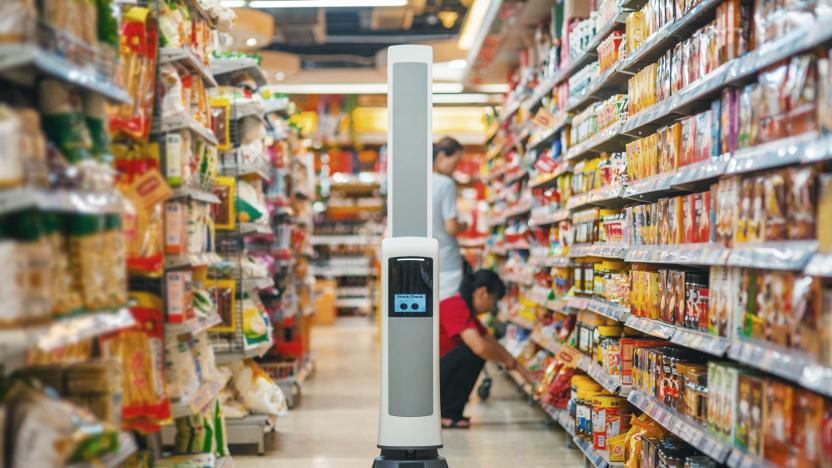
Intel wants sensors to help you with your shopping
As quickly as technology is reinventing your shopping experience, Intel doesn't think it's moving quickly enough. The chip giant is launching a Responsive Retail Platform that creates a common set of sensors, software kits and other components for in-store tech. It promises to speed up inventory tracking, provide feedback on buying habits and personalize your shopping. Stores might not have to cobble together separate solutions or make their own -- they'd just have to turn to Intel and partners for everything they need.

These connected shoes could help you run faster, smarter and more safely
Power laces and 3D-printed materials aren't the only things shaping the future of footwear. If Sensoria and Vivobarefoot have their way, people could soon be wearing shoes packed with tech to help them run faster, smarter and more safely. Here at CES, the companies revealed a pair of concept sneakers that feature two removable chips and four pressure sensors near the heel area. Not only can the system measure speed, pace and track you via GPS, but it's also smart enough to learn your stride rate and foot-landing technique.

Smart stove knobs help you prevent a house fire
You can already buy connected ranges that offer remote control and prevent kitchen disasters. But what about your existing range -- are you really going to replace it just for some extra convenience and peace of mind? You might not have to. Inirv is crowdfunding the React, a smart stove knob system that upgrades most any electric or gas stove. You can control individual burners through your phone, of course, but the real star of the show is a sensor that sits on your ceiling. If it detects gas, smoke or prolonged inactivity, it automatically shuts off active burners. You shouldn't have to worry about sparking a house fire just because you forgot to switch the stove off before you left for the movies.

The world now has a smart toaster
It seems like no one really needs a connected toaster. For decades you've been able to adjust just how dark you want your bread with a knob or lever. But maybe we've been missing out on perfect toast because we didn't have the opportunity to really fine-tune the cooking experience. That's where Griffin comes in with its Bluetooth-enabled gift from the breakfast gods.

Zigbee crafts a universal language for smart home devices
As seamless as smart-home technology is becoming, the devices still tend to sit in isolated ecosystems. Zigbee-based gadgets don't normally know how to use Nest's Thread protocol, for example. That's where the Zigbee Alliance wants to help. It's launching Dotdot, a "universal language" for Internet of Things devices. The open platform lets hardware makers use Zigbee's software layer across virtually any other IoT network, increasing the chances that the devices you want to use can speak to each other.

What to expect at CES 2017
It's easy to be cynical about CES. Every year, hundreds of companies head to Las Vegas to hawk their wares to the tech press, which gulps them down like fast food. The big companies mostly spend their time showing off untold numbers of TVs that look excellent but aren't all that different from what we saw the year before. True innovation is hard to find, buried under the piles of commodity gadgets -- but when you find it, it's worth the trouble.

Google makes it easier to get Internet of Things devices online
It's relatively easy to build your own Internet of Things hardware, but the software is another story. How do you connect it to cloud services, push updates or just write code? Google might help. It's trotting out a developer preview of Android Things, a toolbox that theoretically makes connecting IoT devices as straightforward as writing an Android app. Think of it as a more mature, more accessible Project Brillo. You're not only using ordinary Android developer tools (Android Studio and the official SDK), but tapping into Google Play Services and Google Cloud Platform. In theory, most of the heavy lifting is done for you -- future versions in the months ahead will even grab regular updates (both from you and Google) and use Google's ad hoc Weave networking.

Microsoft will put Cortana in your smart home
Microsoft doesn't just want its Cortana in your phone or on your desk -- it wants the voice assistant to be a mainstay in your smart home. As part of a WinHEC presentation, the company's May Ji has revealed that Windows 10 Creator Update will bring Cortana to Windows 10 IoT Core devices with screens. Combined with longer-ranged voice detection (key to Microsoft's Home Hub plans), you wouldn't have to be anywhere near a PC to use the digital helper -- you could ask your thermostat about the weather, or add an appointment to your calendar through your fridge. Those concepts aren't new, of course, but Cortana can sync with your phone and Windows PC on a level that isn't possible with most smart home devices.
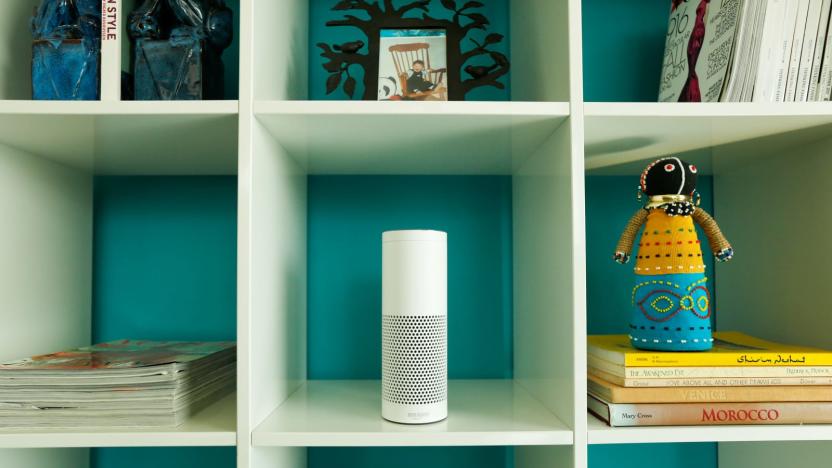
Intel and Amazon team up to help developers build Alexa devices
At this week's Amazon Web Services conference re:Invent, the online retailer revealed two smart home initiatives that are getting a big hand from Intel. First, Intel built a reference design for a smart speaker that employs the Alexa virtual assistant to help with tasks. The device is meant to encourage other companies to make their own gadgets with Amazon's voice tech and the Intel platform. Developers and manufacturers will be able to get their hands on the reference device during the first quarter of 2017.

Google, other tech giants outline ways to improve IoT security
Google, Intel, Microsoft, Verizon, Comcast, Time Warner Cable and a handful of other tech industry giants joined former FCC Chief Technologist Dale Hatfield to form the Broadband Internet Technical Advisory Group in 2010, in an attempt to develop a set of best practices for broadband management and security. Today, BITAG laid out its recommendations for a rapidly growing industry within the world of online communication: the Internet of Things.
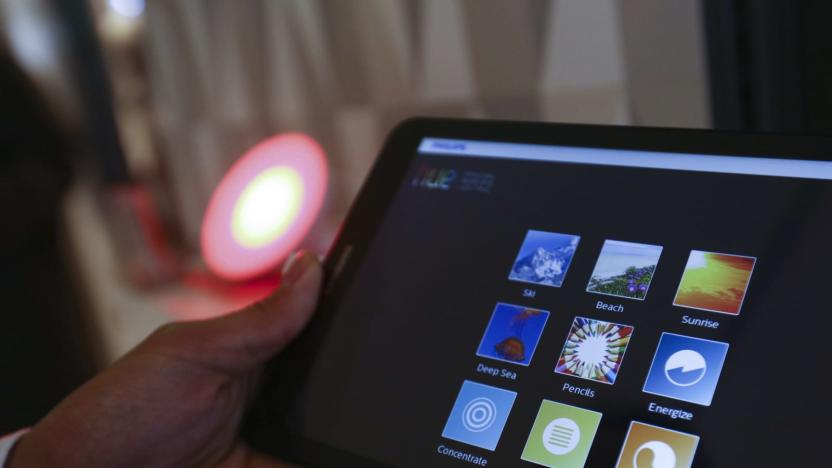
Hackers hijack Philips Hue lights with a drone
Surprise! The Internet of Things is a security nightmare. Anyone who was online a few weeks ago can attest to that. The massive internet blackout was caused by connected devices, and new research from white-hat hackers expounds upon those types of vulnerabilities. The target? Philips Hue smart lightbulbs. While they've been hacked in the past, Philips was quick to point out that it happening in a real-world situation would be pretty difficult. Digital intruders would need to already be on your home network with a computer of their own -- the company claimed that directly attacking the lightbulbs wasn't exactly feasible. But this new attack doesn't require that sort of access.
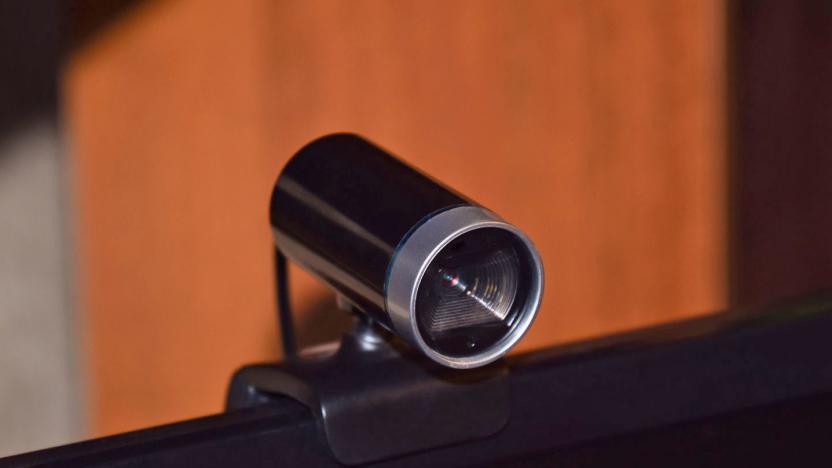
Vulnerable webcams used in major internet attack recalled
This past Friday, some of the biggest sites and services on the internet were effectively shut down by a major distributed denial of service attack (DDoS). As the day wore on, it was revealed that hacked Internet of Things devices like webcams and other connected home devices were the tools used to carry out the attack, and now at least some of the hacked devices are being recalled. The BBC reports that Chinese manufacturer Hangzhou Xiongmai has issued a recall for its faulty webcams that were involved in the attack.

IBM gives its Watson IoT headquarters a $200 million boost
IBM is betting big on internet of things and setting aside $200 million for its Watson IoT division's headquarters in Munich. The company says this investment, one of the biggest it's ever made in Europe, is a response to the growing demand for AI technologies and the capability to connect everything to the internet. Part of the money will go to setting up hands-on labs where its clients can work with a thousand researchers, engineers, developers and business experts in the city. In fact, the tech corp has already secured new partnerships with German automotive parts supplier Schaeffler, Netherlands-based dronemaker Aerialtronics and three facilities at the Thomas Jefferson University Hospitals in Philadelphia.

Arduino is making an Internet of Things kit with your help
Arduino boards can certainly be used to create homebrew connected devices, but that doesn't mean it's easy. What if you're a rookie who has yet to master programming or wiring? That's where Arduino's new, crowdfunded ESLOV kit might save the day. All you have to do to create a basic Internet of Things device is snap in some plug-and-play modules, connect your creation to your PC and draw connections between those modules in an editor. You only have to dive into serious programming if you have specific needs -- there's ready-made code for common devices like air quality sensors, baby monitors and remote-controlled thermostats.

Security writer recovers from massive revenge cyberattack
Journalists are no stranger to making enemies bent on retaliation. However, it's becoming increasingly difficult to survive that retaliation in the internet era... just ask security writer Brian Krebs. An unknown party knocked his website offline last week with a massive distributed denial of service attack (620Gbps of non-stop data) as revenge for exposing two major cyberattack sellers who've since been arrested. He's only back online after taking advantage of Alphabet's Project Shield, which protects journalists against censorship-oriented denial of service campaigns. His previous anti-DDoS provider, Akamai, had little choice but to drop him -- the company tells the Boston Globe that a sustained attack on that level would have cost the company "millions."

Control this smart candle's real flame with your smartphone
Do you like the thought of smart lighting, but think that LED bulbs are a little too modern? No? Well, LuDela has a compromise regardless. It's introducing a namesake smart candle that has you controlling honest-to-goodness fire with a smartphone app -- the company is even cheeky enough to refer to the wireless pairing as "Wi-Fire" (yes, really). You can light or extinguish the flames of multiple candles at once, complete with scene modes that can get just the right look for that special dinner. There's even a safety measure that automatically extinguishes the candle if it's in danger of tipping over.

Canary's Flex is a small, weatherproof security camera
Security cameras are slowly making their way out of your house and onto your porches and yards. Canary is following the footsteps of rival Nest by launching a new, smaller weatherproof camera called the Flex that can be plugged into an outlet or powered by batteries. It's available for pre-order today for $199 and will be in stores by the holidays. Canary is also introducing a new pricing model that is pretty different from what's on the market, but we'll get to that in a bit.
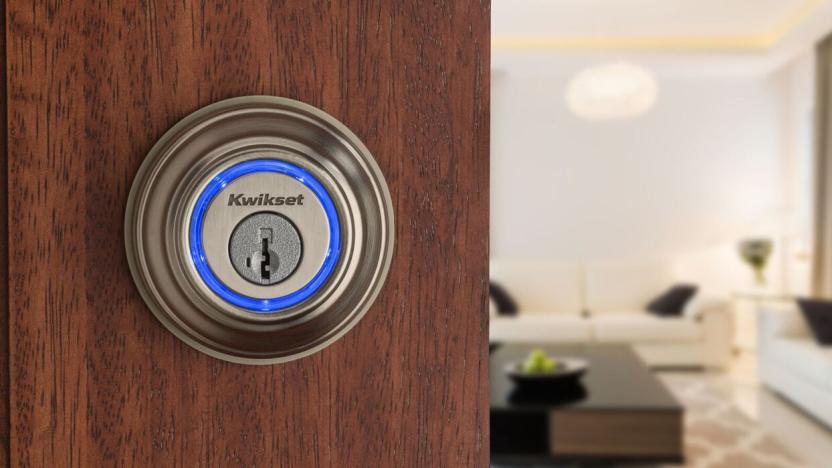
Kwikset's second-gen Kevo is ready to lock up your smart home
When it launched in 2013, Kwikset's Kevo smart lock was the first to allow users to unlock their front door with just a tap on the deadbolt. Today, Kwikset is launching the second generation Kevo with the same touch-to-open feature that made it The Wirecutter's pick for best smart lock, plus some added security features and a refined design.

Google's Fuchsia operating system runs on virtually anything
Google is no stranger to creating whole platforms when it needs them, but its latest project might be something special. It's working on Fuchsia, an open source operating system that's designed to scale all the way from Internet of Things devices through to phones and even PCs. Its kernel includes 'grown up' OS features like user modes and a capability-based security model, Android Police notes, and it supports both advanced graphics as well ARM and 64-bit Intel-based PCs. To no one' surprise, it's using Google's own Dart programming language at its heart.










